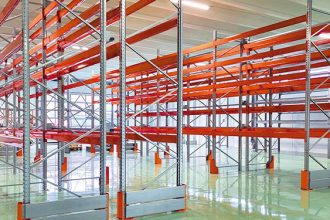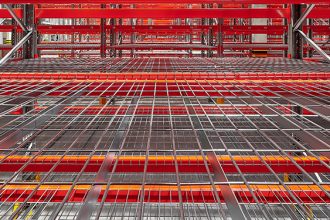The “Dos And Don’ts” Of Rack Ownership

Whether you own an industrial steel storage rack system — or are considering investing in one — ownership comes with a variety of responsibilities. These include ensuring the structure is in compliance with applicable standards and properly maintained for the safety of the personnel working in and around it. In addition to offering a variety of publications (American National Standards ANSI MH16-1 for Industrial Pallet Rack and ANSI MH16.3 for Cantilever Rack) specifying design, engineering, construction, and ownership requirements, the members of RMI have also assembled a list of rack owner “Dos and Don’ts.” Following these recommendations will enhance both the integrity and reliability of the structure, as well as reduce the risk of injury for workers as they perform their tasks in and around the racking.
Rack Owner Dos…
- Design and Construction
- Do use a knowledgeable, qualified rack engineer when designing or retrofitting your rack system
- Do install load plaques and post system design parameters in multiple, conspicuous locations
- Do make sure the original Load Application and Rack Configuration (LARC) drawings are kept current; update the LARC drawings if modifications are made to the racking
- Do not buy the least expensive racking option without carefully examining sections and details of the structure first
- Do consider accessories or other enhancements to the rack structure to improve the system’s safety and longevity (such as doubled columns, larger than standard base plates with additional anchor points, or column bumpers)
- Training
- Do train personnel working around and within the racking on how to properly interface with the structure
- Do train lift truck operators how to properly and safely place and remove loads in the racking system; techniques may be different for different vehicles and different racks — train accordingly
- Do train all personnel to immediately report any visible rack damage or out-of-plumb condition they see
- Inspection
- Do have supervisors conduct periodic rack inspections for damage
- Do inspect all pallets used in the racking
- Do review rack damage logs to plan and schedule rack repair
Rack Owner Don’ts…
- Modifications
- Don’t reconfigure racking without proper authorization from the original equipment manufacturer (OEM)
- Don’t remove or revise beam levels in the rack without first consulting a professional qualified rack engineer, preferably from the racking OEM, for approval
- Don’t use racking components from different manufacturers in the same structure
- Damage
- Don’t ignore damage to the racking
- Don’t ignore warning signs of failure, such as excessive beam deflection
- Don’t put off rack repair
- Use
- Don’t overload the racking
- Don’t use load handling equipment with the system that the system was not designed to interface with
- Don’t skimp on devices and accessories that protect the system
- Don’t incentivize speed from lift truck drivers at the expense of safety
- Don’t allow the facility or aisles to become so cluttered (particularly during peak seasons) that racks are overloaded or vehicles must pass in closer proximity to the racking structure, increasing the risk of an impact
Want more guidelines for the safe use of storage racks? Purchase RMI’s publications “Considerations for the Planning and Use of Industrial Steel Storage Racks” and “Guideline for the Assessment and Repair or Replacement of Damaged Rack.”


